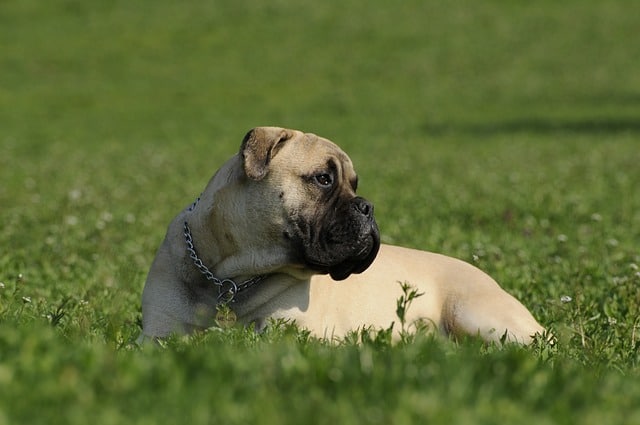Bullmastiffs are large dogs that were developed by crossbreeding two dogs with a division of 60 percent English Mastiffs and 40 percent old English Bull Dog.
Bullmastiffs are large-sized dogs that were bred by English hunters as guard dogs for their estates. They have a broad head, solid build, and a dominating presence.
These dogs got their size from the English Mastiffs that were large dogs but not aggressive enough. And they got their firm, agile & brave attitude from Bulldogs.
Price of Bullmastiff
The cost of buying a Bullmastiff puppy can vary from $1250 to $2500. Often you can find them at around $1600.
There are many factors on which this may cary as below.
- Breeder Repute – The cost of buying a puppy from a reputable breeder would be higher.
- Lineage – The cost of puppies from known, healthy, and registered dogs would be higher.
- Health Tests – Some breeders would get the health tests done. More screening tests would mean a higher cost.
- Age – A puppy that is 2 months old would come at a higher cost than a puppy that is 6 months old.
- Sex – Female puppies tend to be at a slightly higher cost compared to females.
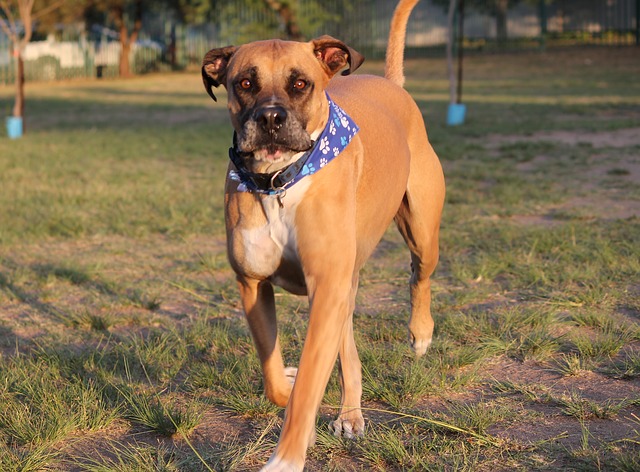
Bullmastiff – Size, Lifespan & Physical Characteristics
Size: A full-grown English Bulldog Mastiff mix can grow to a height of 25 to 27 inches with a weight averaging around 110 to 130 pounds.
Lifespan: They have a relatively short life expectancy of 8 to 10 years.
English Bulldog Mastiff mix is a large-sized dog having a strong and muscular body. They have a broad head and a deep chest. Their muzzle is broad and deep.
The tail of the bullmastiff is set high with a thick base tapering to a point. It may be straight or curved. The ears of the bullmastiff are folded and V-shaped.
Bullmastiffs have a short dense coat and shed less and typically come in brindle, fawn, or red color. Occasionally they may have a white patch at the neck.
Their coat provides good protection from weather like rain, snow, or cold.
Bullmastiff – Temperament
Bullmastiff is a fearless, confident dog who is loyal to his owner.
They have the instincts of a protector. They don’t bark much and hence are also called “Silent dogs”.
Bullmastiff will stand firm to the strangers and protect. At the same time, they are quite loving and affectionate to the family.
They are popular as companion dogs and are also called the gentle giants of the canine world.
Bulldog mastiff mix can be aggressive to other dogs specifically males and can injure them. Hence, they should be socialized and trained early.
Once grown up, they can live the day alone if both parents are out at the office. They don’t have many exercise requirements. They also do not shed much and are apartment-friendly dogs if properly trained.
Are Bullmastiff good as family dogs?
English bulldog Mastiff or Bullmastiff is a large, muscular dog. They are quite loyal and would protect their family with the instinct of being the guardian of the home.
Bullmastiff doesn’t bark much and is also called “Silent Watchdog”. They don’t need much of an exercise and would love to lie down on the couch.
Once grown up, they are good to be left alone for some time for a family at work. They are also one of the few large-sized Apartment friendly dogs.
Though there is something you should know about them before making your mind, they are heavy droolers. So if you can’t imagine yourself wiping then he may not be the right dog for you.
Further, you should be cautious if you are having small children or pets at your home. Kids may not be mature enough to treat this large dog with respect and as with any large dog, care should be taken.
With pets like cats they may sometimes go with their instincts and chase them subverting the training and hence if you have pets, you may avoid him.
If you have made up your mind and looking for a very loyal, couch friendly large dog then this is a great protective companion for the family.
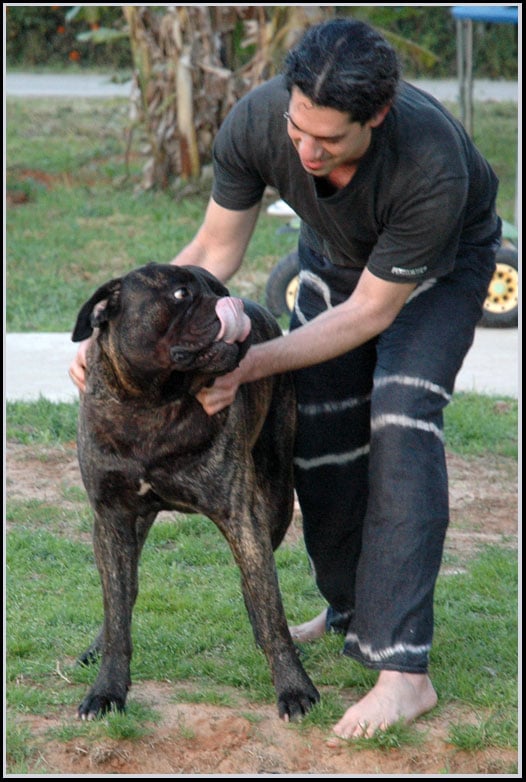
Care required
Nutrition:
Bullmastiff is recommended to have high-quality dog food that should be light in calories as they might get overweight.
Bullmastiff is recommended to have 3 1/8 to 4 1/8 cups of high-quality dog food daily, divided into two meals. The feeding amount can vary based on the age, size, and activity level of the dog.
Take the advice of Vet if needed who can advise based on the age, size, and build of the dog.
Grooming:
Bullmastiffs don’t shed much.
They have a short and dense coat that comes in red, fawn, or brindle color.
They are one of the easiest dog breeds to groom. You can easily clean them with a brush. Daily brushing will also help to make the bonding between you and the bullmastiff.
Bathing him should only be when needed. Frequent bathing may result in drying up of natural oils and that may lead to dry skin and other skin-related ailments. Keep checking his nails as well. Long nails may lead to discomfort in walking.
You will also need to keep his wrinkles free from dirt and moisture to avoid skin issues. Check out these wipes that may help you with the same.
Exercise:
Bullmastiff would need a couple of short daily walks. They are not for folks who would like to have a running companion. Instead, they would be a good company for short strolls.
Bulldog mastiff mixes are not high-energy dogs and hence they do well in houses with a yard as well as in apartments.
They are prone to overheating and hence ensure that you have enough space where they can cool down. Avoid exercising in direct sunlight.
Training:
A bullmastiff is a large dog with a powerful body and can be aggressive to other dogs. They must be trained and socialized with other humans and pets from the beginning.
They learn the training commands quickly as they are quite intelligent.
English Bulldog Mastiff mix also are independent thinkers. This may make training a bit difficult as they can become a bit obstinate. Firm, positive, and consistent training is required for them.
Bullmastiff Health
English Bulldog Mastiff mix is generally a healthy breed but may suffer from some common dog health issues. It is important to screen the puppy with a vet before you adopt him. Some common ailments that they are prone to are:
Cancer – Just like humans, cancer can develop in dogs as well. Bullmastiff is prone to lymphosarcoma, osteosarcoma, hemangiosarcoma, and mast cell tumors.
Bloat – This is a life-threatening medical condition that large deep-chested dogs like English Bulldog Mastiff mixes are prone to. Dog parents must be aware of this so they know what is needed if an unfortunate situation happens.
This is a condition when the stomach of the dog is distended with gas or air and then twists. The dog is not able to vomit the extra air and goes in shock due to the lowering of blood pressure. Immediate medical intervention is required.
Care must be taken not to give one large meal and instead divide it into two or three meals in a day. Be vigilant that the dog is not eating rapidly. Do not give large volumes of water to drink after eating.
Exercise just after eating should also be avoided. Feeding on a raised platform is best so the dog doesn’t need to try bending down to eat.
Hip Dysplasia – This is a medical condition which a dog can inherit. In this, the thigh bone doesn’t fit properly into the hip joints.
This is painful for dogs in varying degrees. It can sometimes get unnoticed until arthritis develops in old age. Dogs with hip dysplasia should be neutered as this can be passed onto dogs’ offspring.
Elbow Dysplasia – This is also a painful medical condition in the elbow joint.
Hypothyroidism – This is a medical condition in which the thyroid hormone is not produced as required. This may lead to infertility, obesity, mental dullness, and lack of energy. Symptoms of this include bullmastiff coat becoming coarse and brittle.
Aortic Stenosis – This is also an inheritable medical condition in which the defect in the aorta narrows the aortic valve to enable a smooth blood supply.
Symptoms include dog feeling lethargic all the time and having instances of fainting. Again, as this is an inheritable condition, dogs having this should not be bred.
Entropion – This is prone to wrinkle dogs. This is a medical condition when eyelids roll inwards and start to irritate. Surgery may be required for correcting this. If not treated, this may lead to blindness.
Skin Allergies – English Bulldog Mastiff is prone to skin problems like rashes, sores, and irritations. They may also get skin infection easily. Keep an eye for any rashes on his skin.
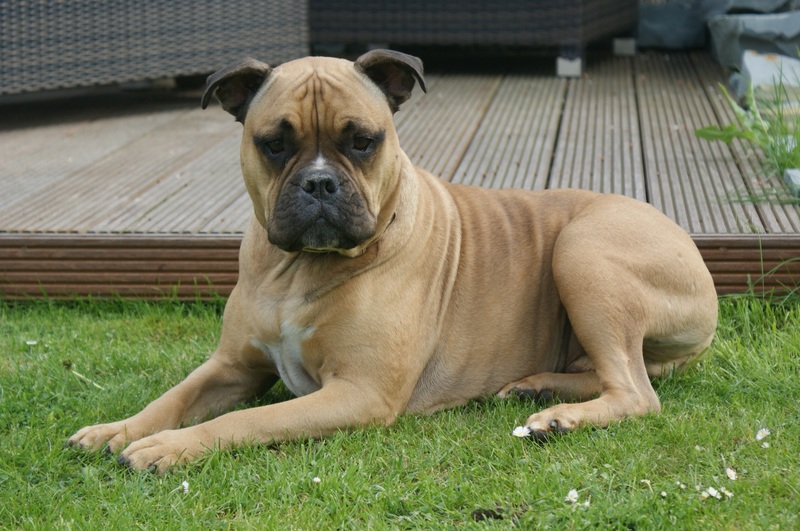
Interesting fact about Bullmastiff origin
In a dog show in 1901, Mr. Burton of Thorneywood Kennels challenged that if anyone can escape the dog which he has brought, he will win a prize of Pound one, a good sum of money in those days.
An experienced man took that challenge for some harsh consequences. Despite him being given a head start, he was chased and knocked down by the dog three times. This increased the popularity of the English Bulldog Mastiffs.
Sylvester Stallone adopted a Bullmastiff named Butkus when he was six weeks old.
Pros and Cons of BullMastiffs
| Pros | Cons |
|---|---|
| Require less maintenance | Though they don’t shed much but drools a lot. Be prepared to clean the floor often. |
| An excellent Guard dog | prone to heat exhaustion |
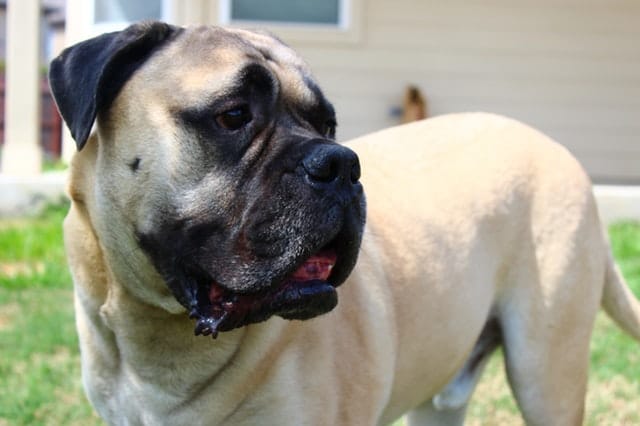
History of Bullmastiff
Bullmastiff was originally bred around the 1860’s by mixing Old English Bulldog (now extinct) and English Mastiff to have the perfect large and courageous dog having the agility to catch the poachers.
They soon became quite popular among the gamekeepers (professional hunters who used to play games and have dog shows) and were known as Gamekeeper’s Night-Dog. Slowly poaching declined and they were started to be used as Guard dogs.
In the early 20th century, they were started to be bred as a pure breed with the name of Bullmastiff. In 1924, England’s Kennel Club recognized the breed.
A few years later, the English Bulldog Mastiff mix was registered as a pure breed and named Bullmastiff in 1934 by the American Kennel Club (AKC). They currently rank 51 in the popularity list among the 195 registered dog breeds.
English bulldog mastiff mix parentage
Bullmastiff is a crossbreed of large English mastiffs and firm, agile old English Bulldogs. Let us also explore briefly about their parent breeds.
English Mastiff:
English Mastiff or Mastiff are known for their massive size and muscular body. They can become larger than humans. Though great Danes can be slightly longer, Mastiffs like English Mastiffs can outdo them when it comes to size.
They usually weigh around 150 to 250 pounds but few can reach up to a massive weight of 300 pounds or more. Thus they are not the dogs for the novice or first-time owners.
Old English Bulldog:
Old English Bulldogs are extinct now. They used to be broad, agile, muscular, and confident dogs averaging around 15 inches in height. They were revered for the fights and frequently participated in the English blood sport of bull-baiting.
With the passage of the Animal Cruelty bill in the year 1835 and crossbreeds with terrier and mastiffs becoming more popular this breed started to decline and eventually go extinct.
FAQs
Bullmastiff is a gentle and good-natured dog. They do well as family dogs though they are not recommended for families having small children.
Bullmastiff is a large, strong, and powerful dog. If they are not trained properly, they can become very aggressive especially to dogs of same-sex.
Yes, Bullmastiffs are excellent guard dogs. They are gentle and loving with the family but can be very protective of their family.
A full-grown English Bulldog Mastiff mix can grow to a height of 25 to 27 inches with a weight averaging around 110 to 130 pounds.

